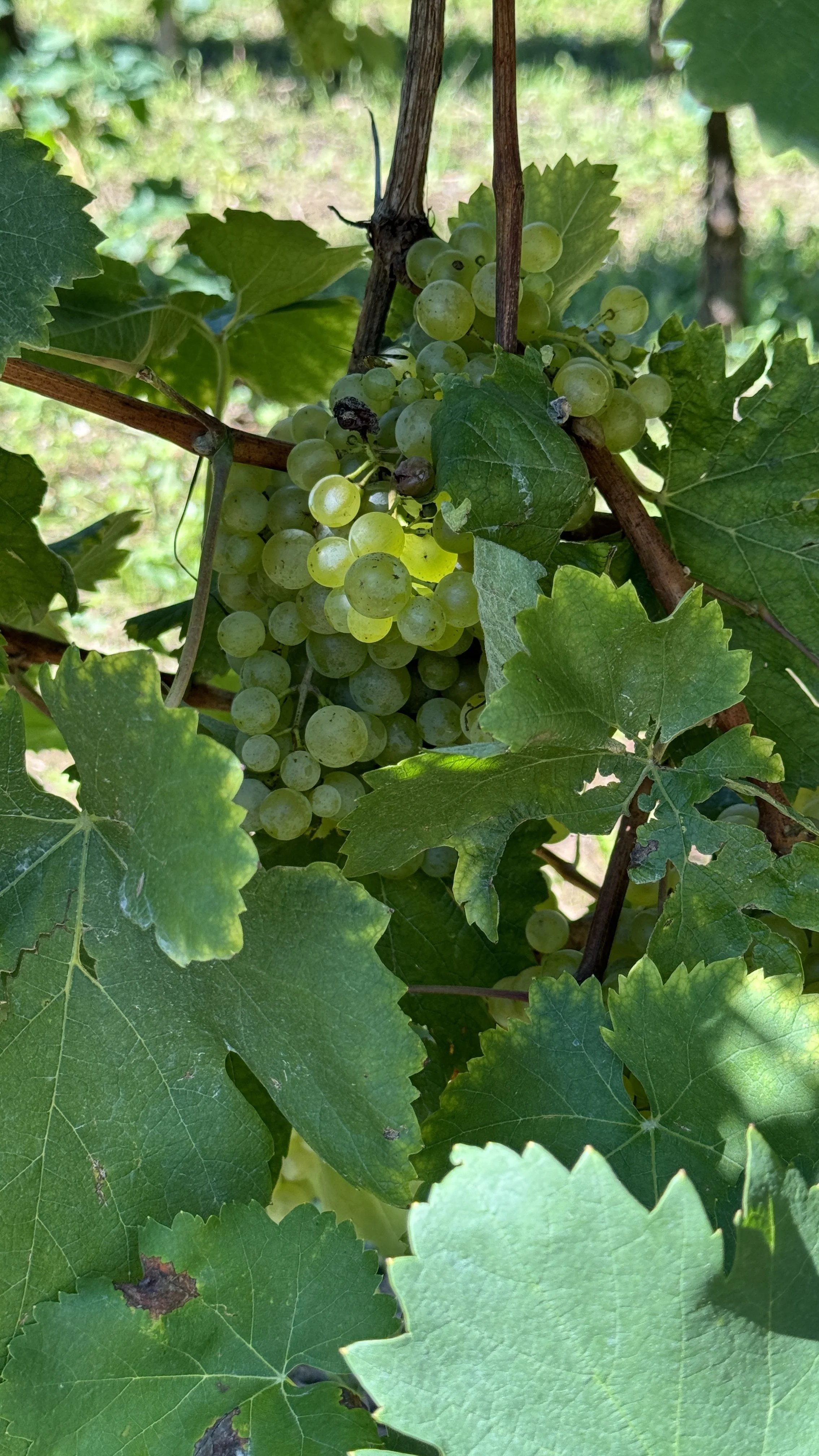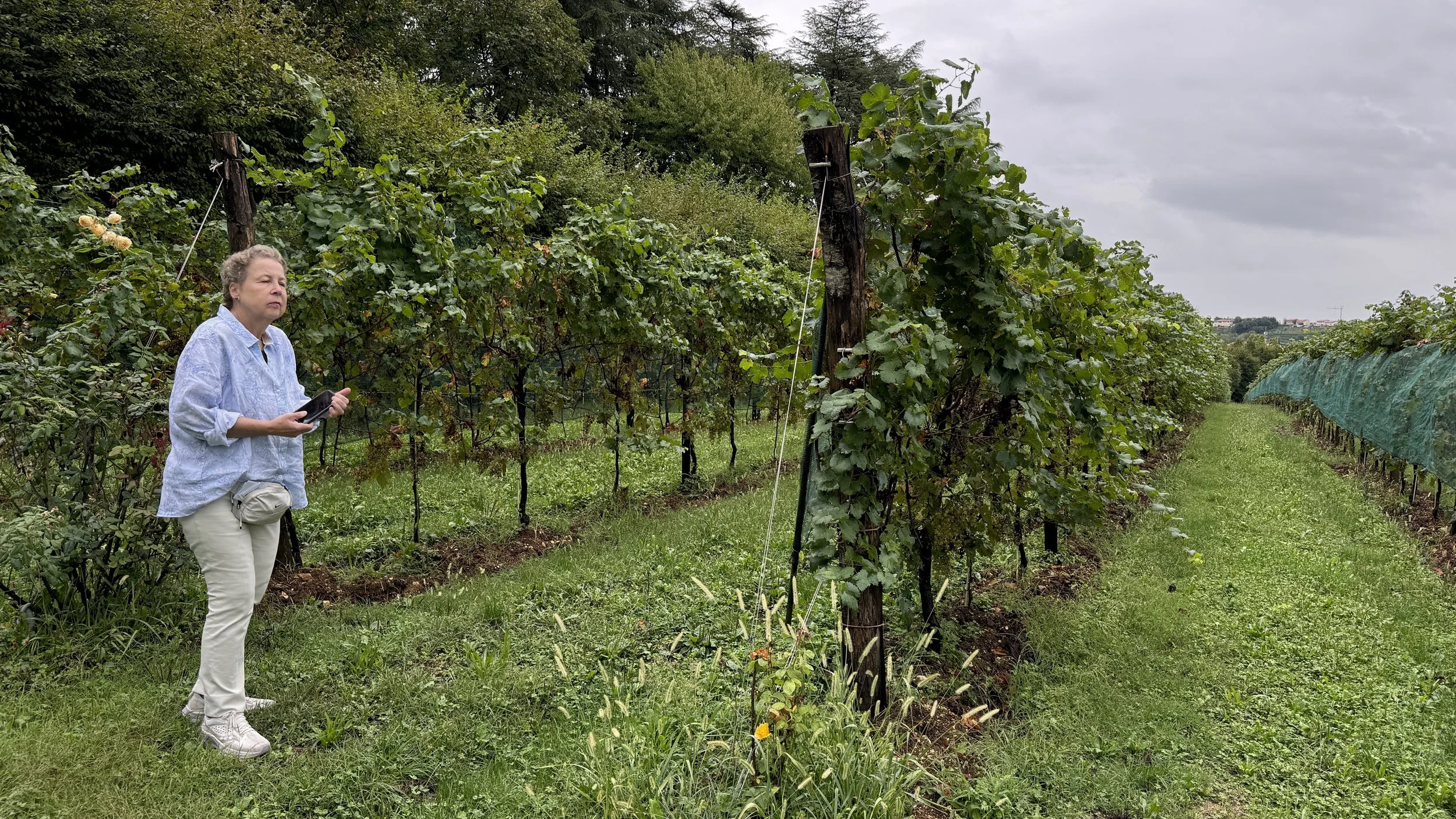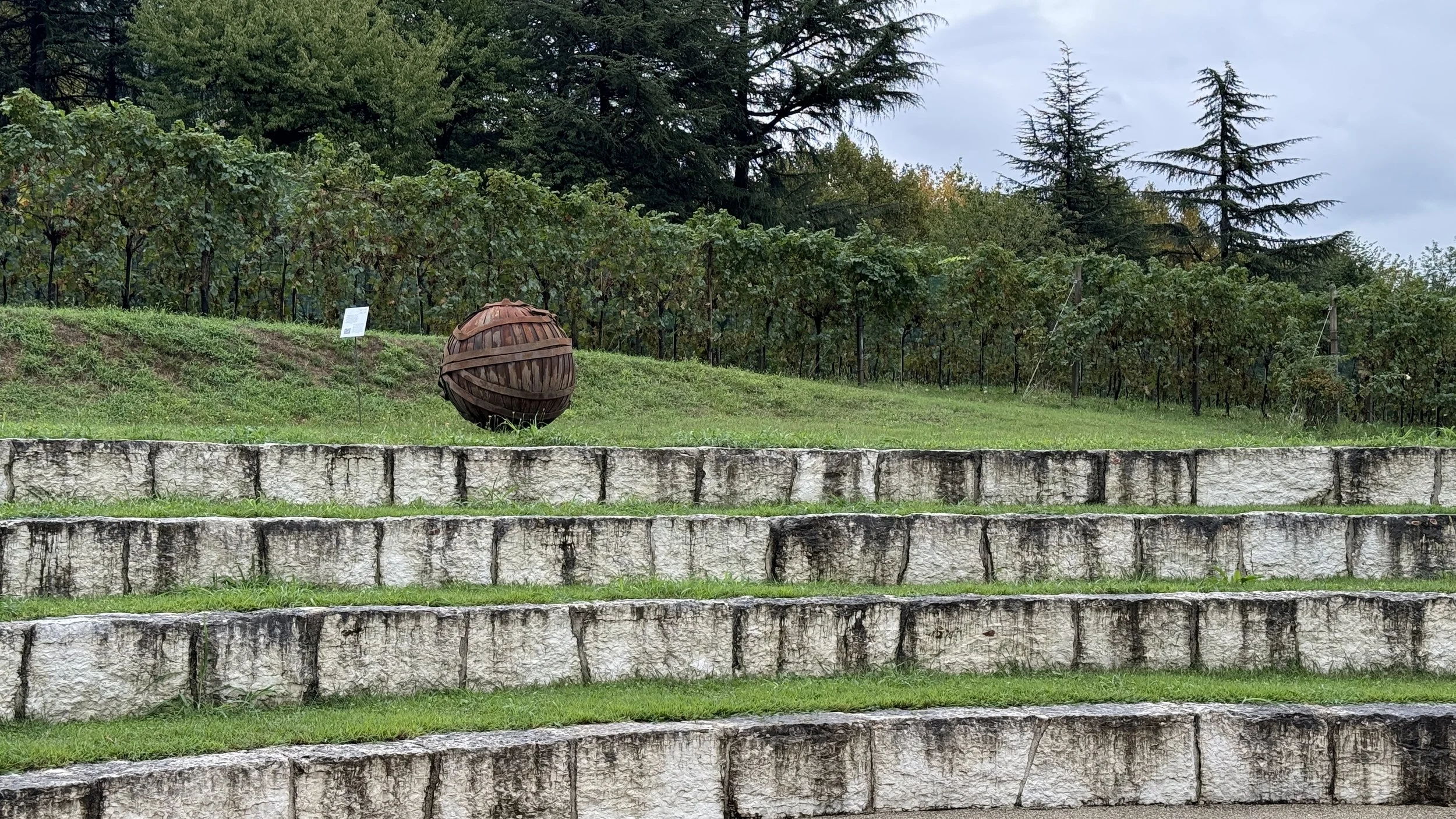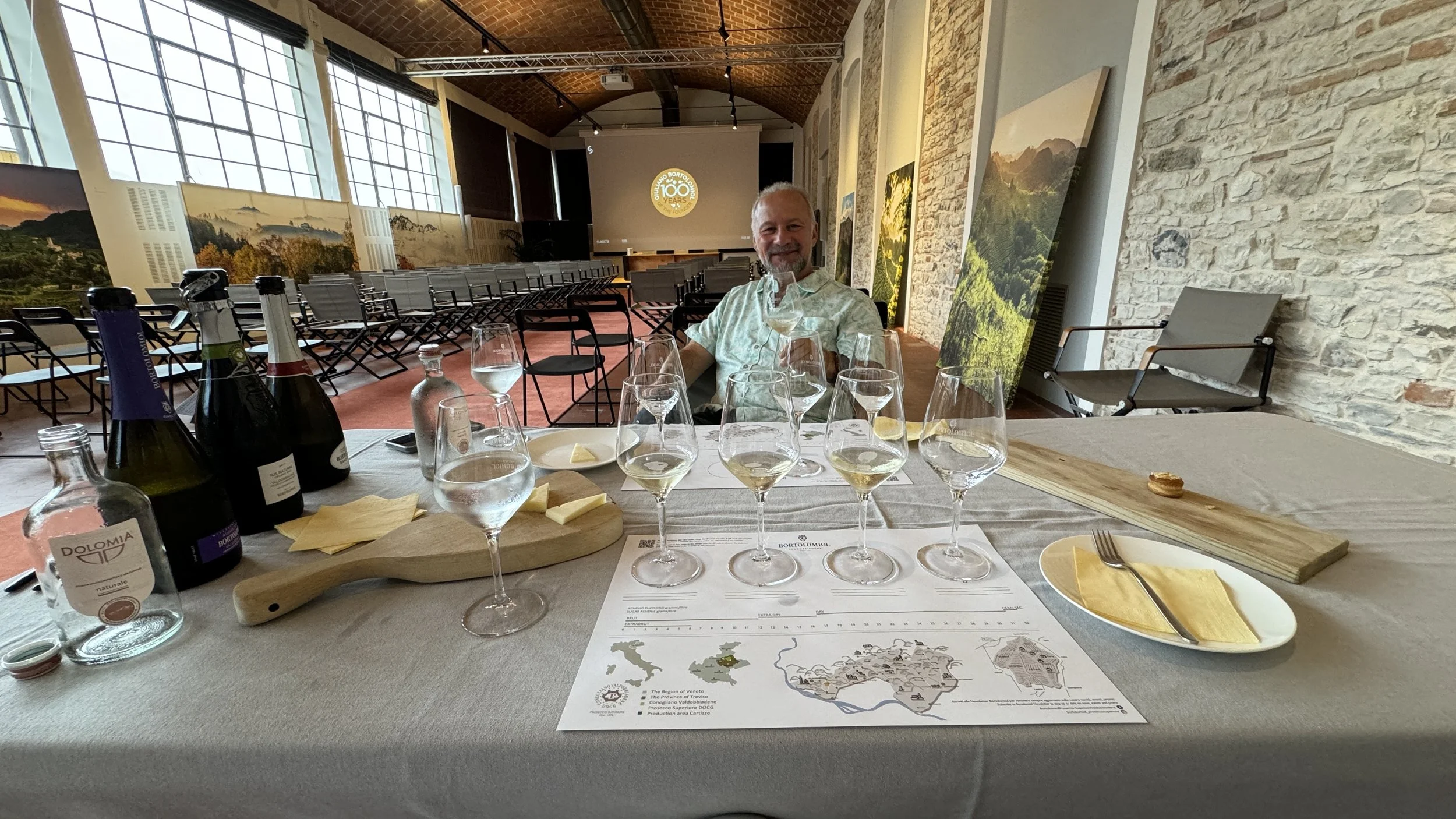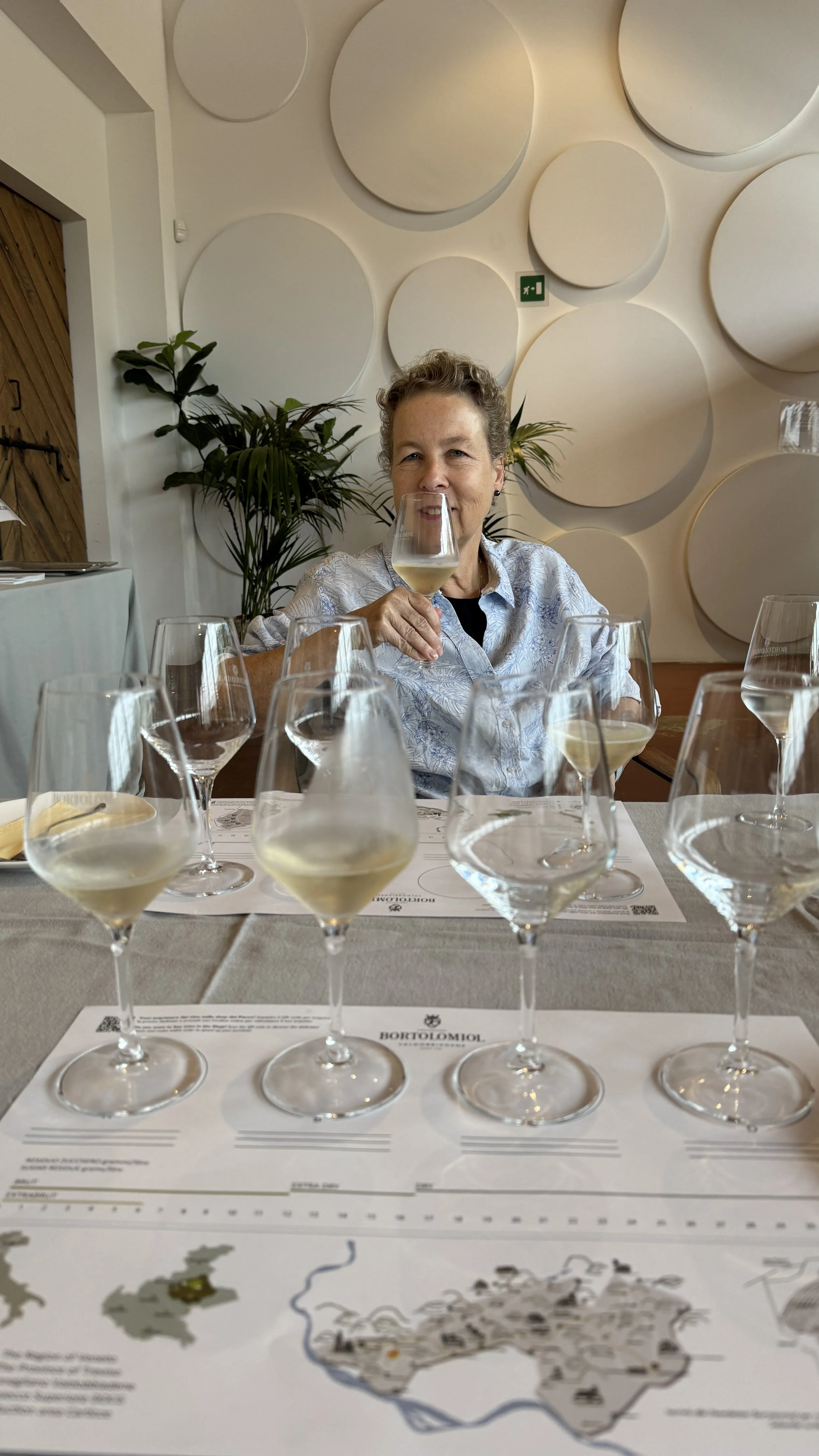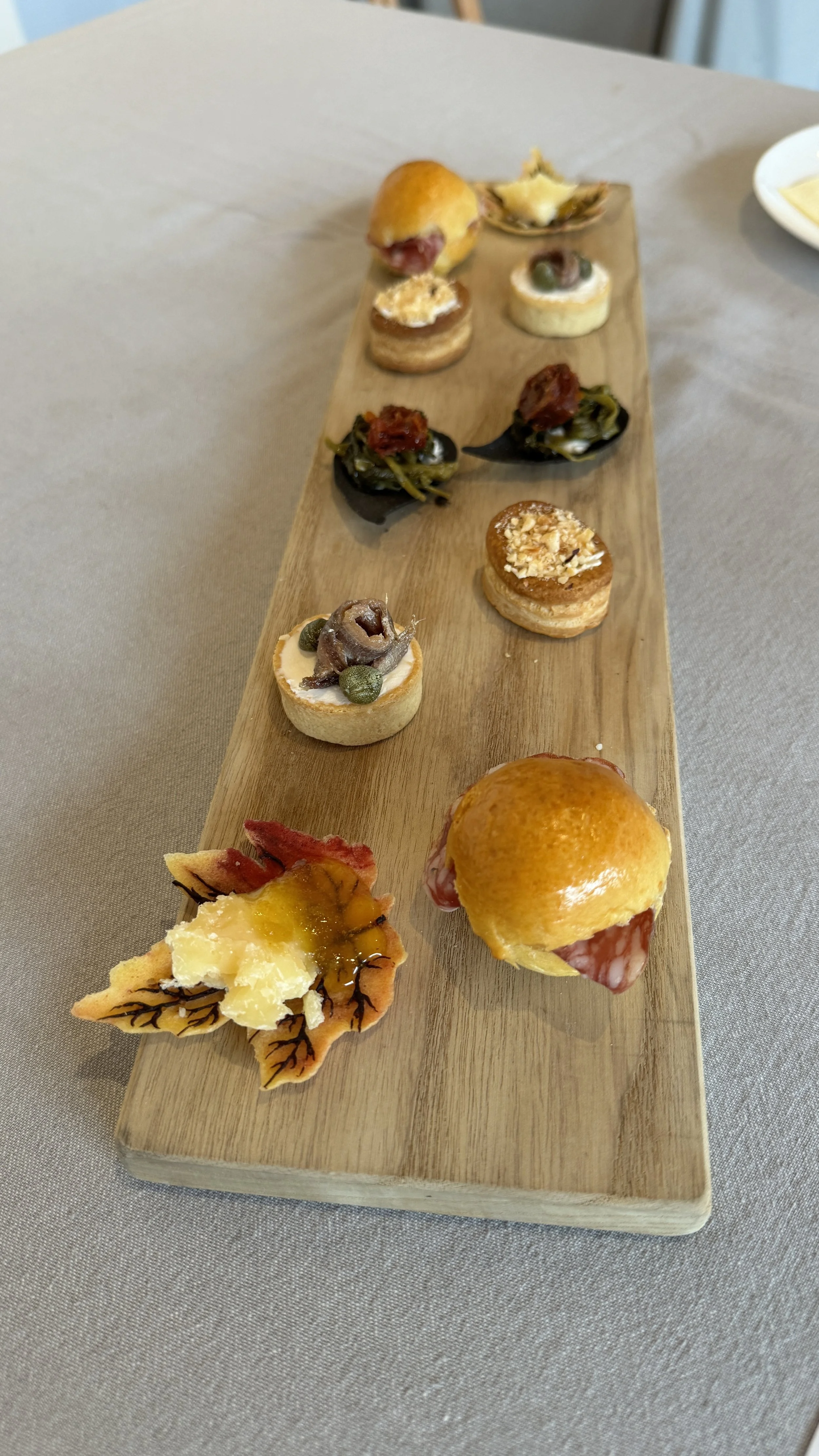Special Report: Parco della Filandetta
A prosecco tasting special report
We visited a Prosecco vineyard for our first wine tasting.
Clera grapes in the Prosecco area
We drove to Bortolomiol in Valdobbiadene for a tour and tasting with some gourmet treats. The day promised rain so we were prepared for all weather conditions.
Valdobbiadene is a moderately sized village in the UNESCO world heritage area of the Prosecco Hills. It has a simple village center with a square that we drove past on our way to the tasting.
The tasting room was bedecked with large tables beautifully laden with plates and glasses and silverware because that evening they were hosting a special event for their farmer families where the bulk of their grapes come from.
Organic Clera grape vines at Parco della Filandetta
Bortolomiol produces around 2.5 million bottles of Prosecco, mostly DOCG although their own fields produce only a small portion of that as organic Prosecco.
Art installation at Bortolomiol representing a yarn of silk
Their fields are also decorated with beautiful sculptures taking homage to the fact that this factory location was once historically a silk mill. The name Parco della Filandetta means small silk mill.
Randy toasting with a glass of Brut Prosecco
Gitty enjoying a glass of Extra Dry Prosecco
People in the area do not like to call the wine Prosecco as that name has become de facto to all sparkling wines from the region so they stress naming the wine as Valdobbiadene Spumanti.
The grapes are harvested by hand starting this Saturday weather permitting. They only harvest in fine weather due to the labor intensive effort and not wanting to slosh through the mud in rainy conditions.
The grapes are put in boxes and collected in trucks and brought to the facility where they are first tested in a machine for sugar content. Then the grapes are unceremoniously dumped in a big vat with rotor blades that press them into large metal tanks where the temperature is raised enough to separate the solids from the must (grape juice). Then the must is transported into other vats in the next room and yeast is added to consume the natural sugars until the first wines are produced. The liquid has no carbon dioxide because all of the gas produced during the first fermentation is allowed to bubble away. What is left is flat white wine with alcoholic content but no sugars.
A delicious board of nibbles to enhance the Prosecco tasting experience
Prosecco is primarily made using the Martinotti Method. In this method, the second fermentation occurs in large pressurized tanks rather than individual bottles as is done in the traditional method. There the flat wine gets more yeast and sugar to start the second fermentation. In this process, the produced carbon dioxide is kept in the tanks producing the sparkling wine from Valdobbiadene we all enjoy.
Our host for the wine tasting tour was a young man of 22 named Nicholas. He worked there since he was 16 as an intern from high school.
Nicholas led us to the second floor because the tasting room was already prepared for the evening event. On the second floor, a single table with two settings was set up for us. Nicholas brought us two bottles of Prosecco. An Extra Brut and a Brut. The extra brut contained 0-6% sugar and the brut contained 0-12 % sugar. The extra brut was a new category since 2018 and does not have to be used if the producer just wants to call it Brut. Nicholas poured us generous portions of Prosecco in each glass.
He explained to us the specifics of the first wines we tasted and then brought us delicacies to nibble on including some finger sandwiches and a cheese board.
While we nibbled at the food and sipped the different Proseccos, Nicholas returned with another two bottles. One was Extra Dry (13 - 18 g) and the other was Dry. Extra Dry (18-30 g) of sugar.
The four bottles of Bortolomiol Prosecco we enjoyed during our tasting
One of our best wine tastings ever!

